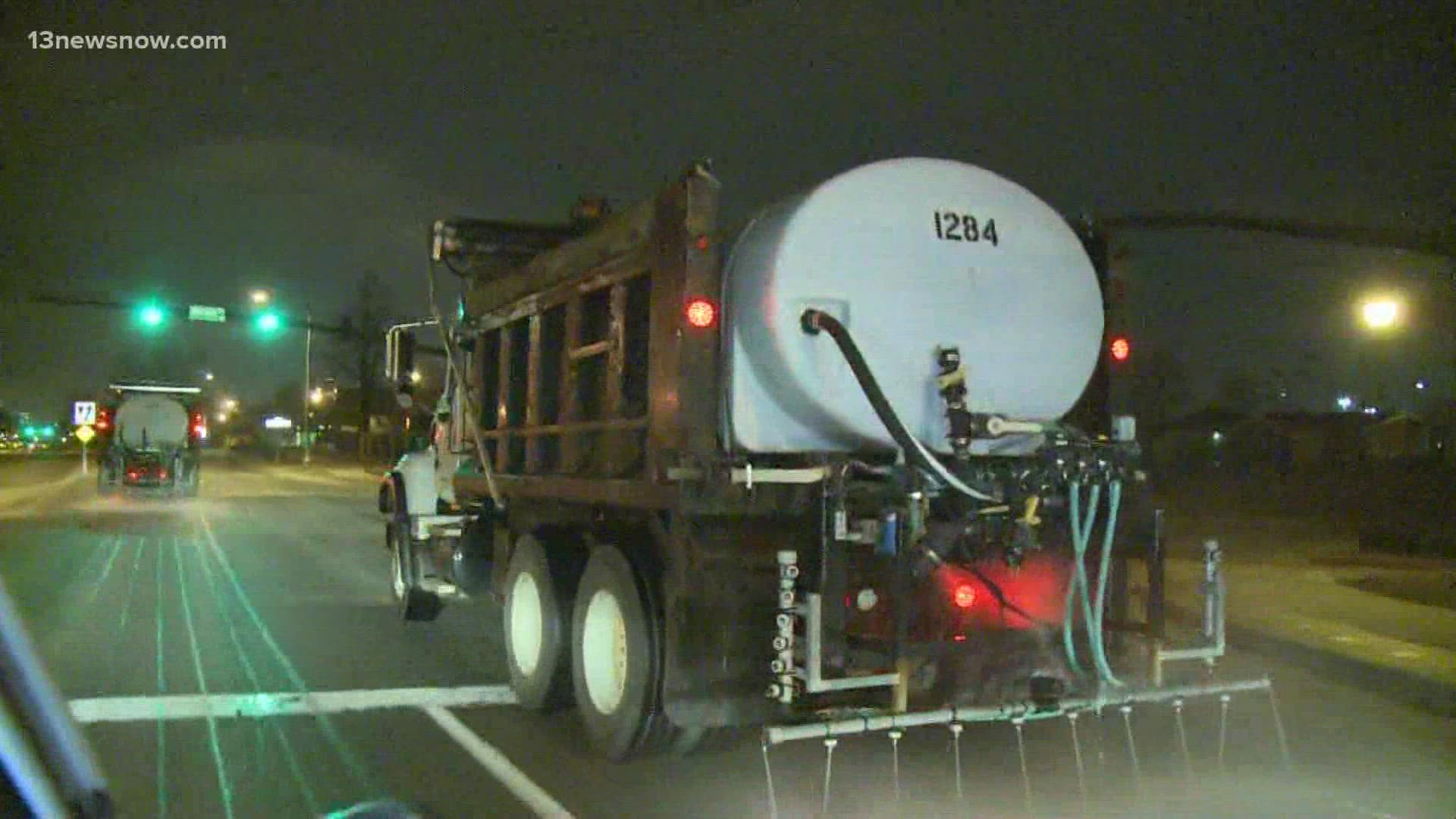NORFOLK, Va. — Every time it snows in Hampton Roads, you hear us talking about salt and brine on the roadways.
You’ve probably seen the trucks out on the highways and interstates, dropping and spraying salt before and after the storm.
RELATED: 13News Now Winter Weather Guide
The practice of salting roads began in the 1940s in New Hampshire. Today, the entire country uses between 10 and 20 million tons of it to treat roads every winter.
It wasn’t until the mid-1990s that we started taking a different approach to how we use salt, though. Before then, the focus was on applying salt after snow or ice formed. It helped reduce the impact of the conditions, but it was passive and costly.
Then in the mid-1990s, someone had the great idea of mixing the salt with water and spraying it on the roads before the snow started to fall. It prevented snow and ice from sticking and bought drivers a lot more time and patience on the roadways.
Unfortunately, both rock salt and brine is bad for the environment, the roads, and our cars because it’s corrosive.
Looking to the future, there are dreams of pavement resistant to freezing, or even solar-powered roads... but we’re not likely to see options like these anytime soon, because they are too expensive.
For now, we are stuck with the salt.
But take comfort knowing it works. The American Highway Users Alliance found that road salt reduces collisions by up to 85% during and after a storm.

